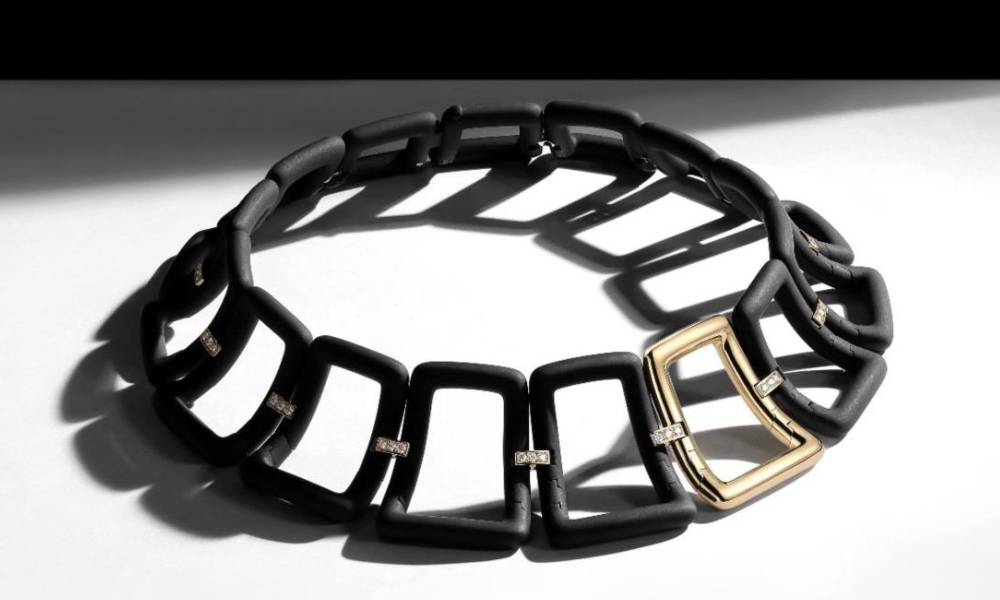Richard Wu is the architect of the unexpected, and breaking the mould is second nature to him. His artistry lies in expressing his existential angst through one-off, new-age creations. Starting out as a traditional jade carver and engraver in Suzhou, China, and later learning cutting-edge jewellery-making techniques in Italy, Richard has absorbed the essence of both cultures and mastered the art of balance.
His stirring optical imagery is a rich tapestry woven from vulnerable memories, powerful emotions and profound messaging. Materials and gemstones take a backseat to the vivid, narrative-driven visual imagery that overpowers the senses.
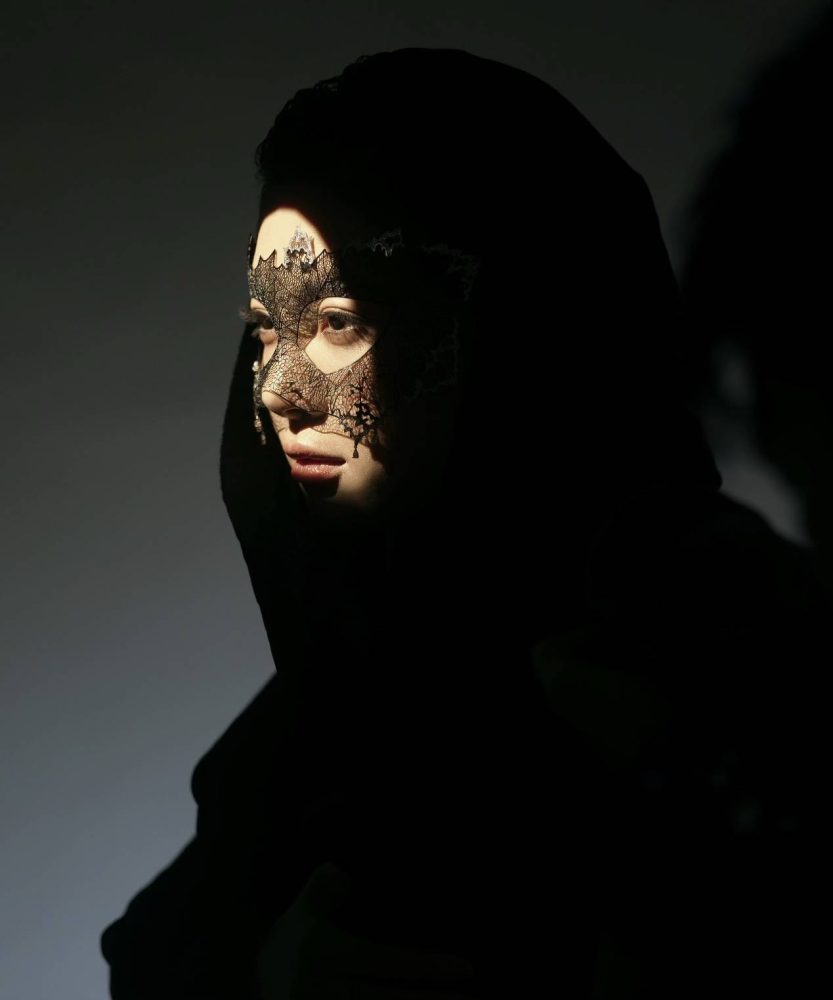
Inspired by this thought, the Black Veil—which won the People’s Choice Award 2024 at Couture—took a year to make. Handmade using titanium and white gold, and inlaid with diamonds, the veil is both light and malleable.
Could you tell us about the moment or inspiration that drew you into crafting jewellery professionally?
I started off in the business of jade carving, engraving traditional elements like flowers, patterns and elements drawn from Buddhism. Over time, I realised that the younger generation—and even I—were more fascinated by Western jewellery, which felt cooler and more modern. So, I thought why not add some gold and diamonds to jade? That led me to move away from jade carving, and I eventually went to Italy to study jewellery making where I immersed myself in every facet of traditional jewellery-making.

How did this cross-cultural training—from Chinese artistry to Italian craftsmanship—shape your personal aesthetic and the vision behind Richard Wu Jewelry?
Suzhou is not only famous for its jade carving but also for having the largest number of classical gardens in China. These gardens, as well as the old city, are still well preserved. I continue to seek inspiration from the way people lived before industrialisation. I am also deeply interested in the philosophies of Taoism, Buddhism and Confucius. Jade carving is one of the few traditional techniques that remained uninterrupted even during times of war, offering a window into Suzhou’s rich history and the legacy of its jade carving culture.
As for the Italian craftsmanship, I not only learnt the techniques, but it also taught me to see beauty from a different perspective—to pursue perfection and romanticism without limitations. These two very different approaches not only gave me skills, but more importantly, they revealed the philosophies behind designing.
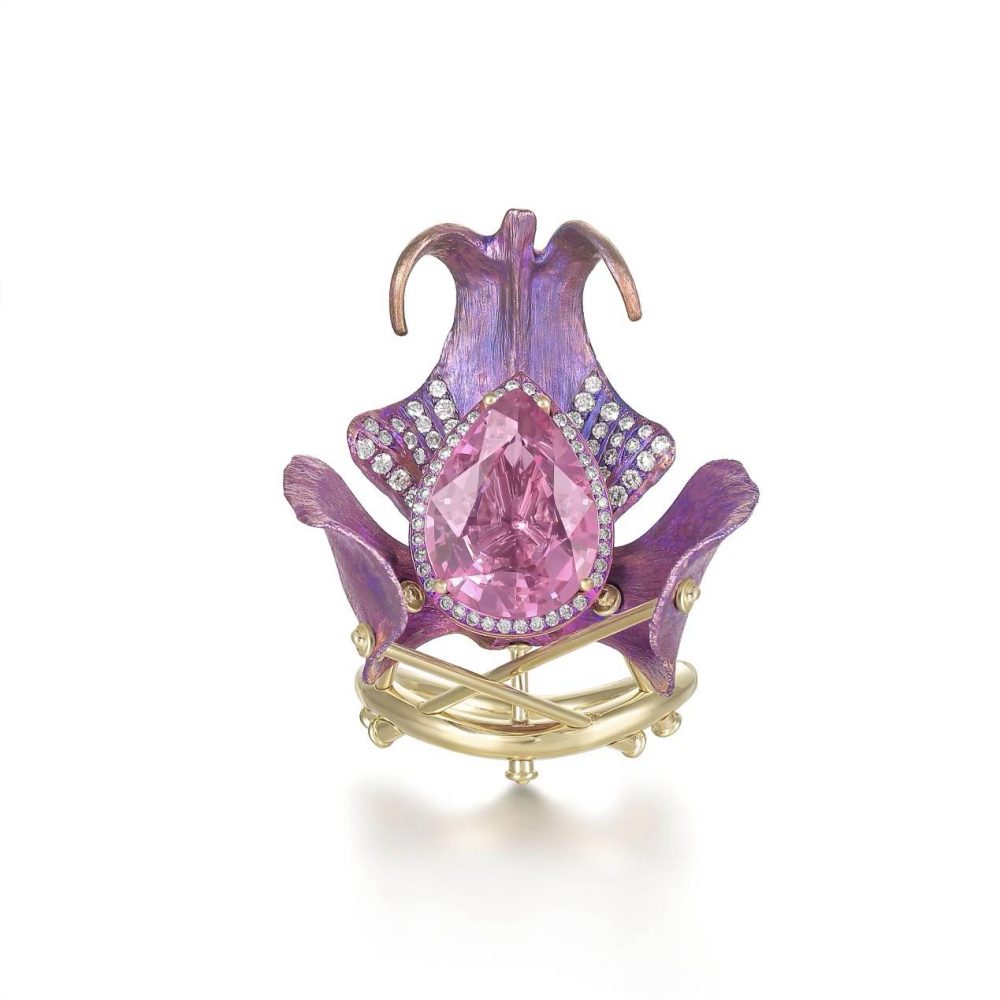
In this piece, stamens symbolise flight, gold wires represent steel, and the centre stone stands for consciousness. The Flying Orchid ring is not only visually striking in its design but also innovative in technique. The centre stone uses a technology that allows it to be easily replaced—whether with a different coloured gem or even a diamond—using a simple tool. In the future, Richard aims to expand this system, allowing one to interchange stones across multiple designs.
Your pieces often seem to blur the line between wearable art and sculpture, underlining both delicacy and drama through intricate detail, and a dreamlike aesthetic. What draws you to evoke that mood through metal and gemstones?
Gemstones are beautiful—their natural colour and texture is beyond our wildest imagination. Both metal and gemstones are enduring materials, known for their stability and longevity. Metal, in particular, can be bent, stretched, and moulded into many forms, giving me a lot of opportunities to bring my creations to life.
Your work often includes a subtle gothic touch. What inspirations—literary, historical, or architectural—infuse that darker, romantic edge into your pieces?
My creations often include a conflict of contrasts—like fragility and power; existence and disappearance, woven with elements of illusions. Part of me loves life and believes in creating a better world through love. But another part of me is deeply affected by my dramatic and vastly changing childhood, which made me realise how fragile and sensitive we truly are. Many of my pieces are created when I get very emotional.
Sometimes, I even dream of certain forms before I start creating them.
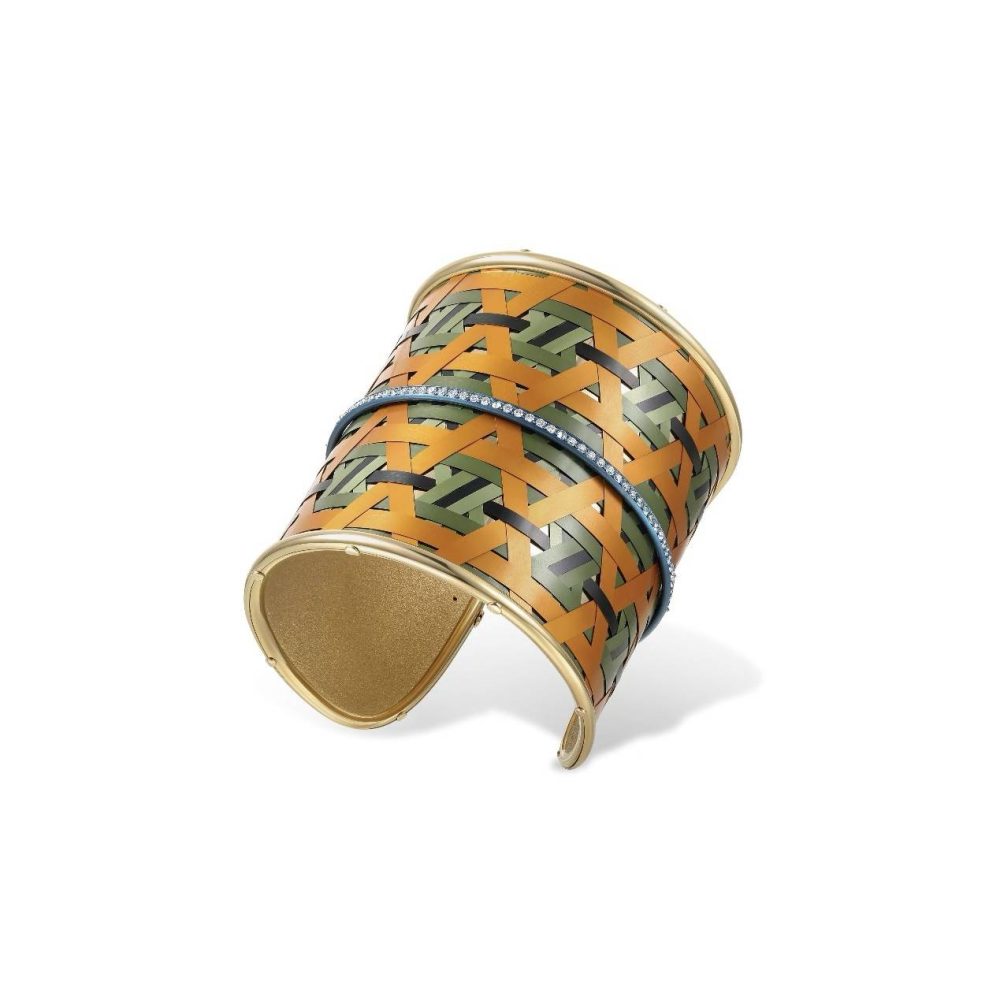
Do your pieces tell specific stories or exist more as abstract expressions?
I would believe my creations are more of an abstract expression. However, sometimes it’s linked to specific stories, too.
Which materials and techniques do you prefer, and why?
Right now, it’s gold and titanium. Gold has a beautiful colour and it’s very easy to work with. The techniques for modelling, shaping, and setting it are also well established. Titanium, on the other hand, pairs well with gold because it’s light and can lend colourful qualities that sometimes help offset the limitations of gold.
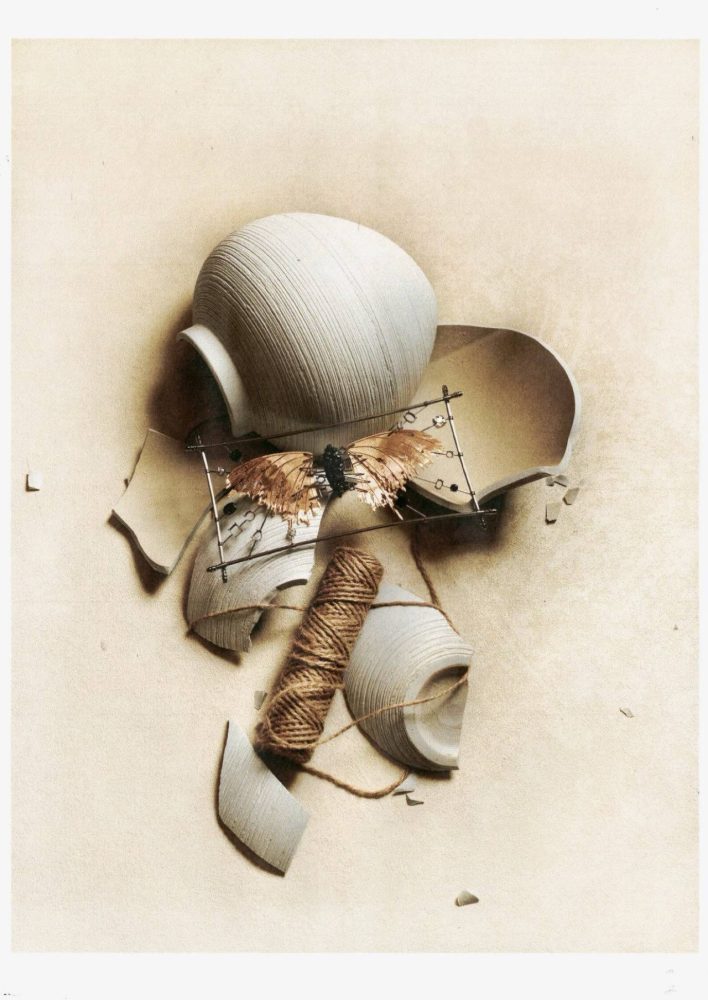
How has your style and approach evolved since you first started?
I think it’s an ongoing process of evolution—both in design and technique. Initially, I made smaller pieces that leaned more towards traditional designs. Over time, as I learned more techniques, I started creating bolder and more imaginative pieces. At the same time, as my designs became more interesting and complex, I started improvising with the techniques I use. Still, every piece I make continues to reflect my signature style.
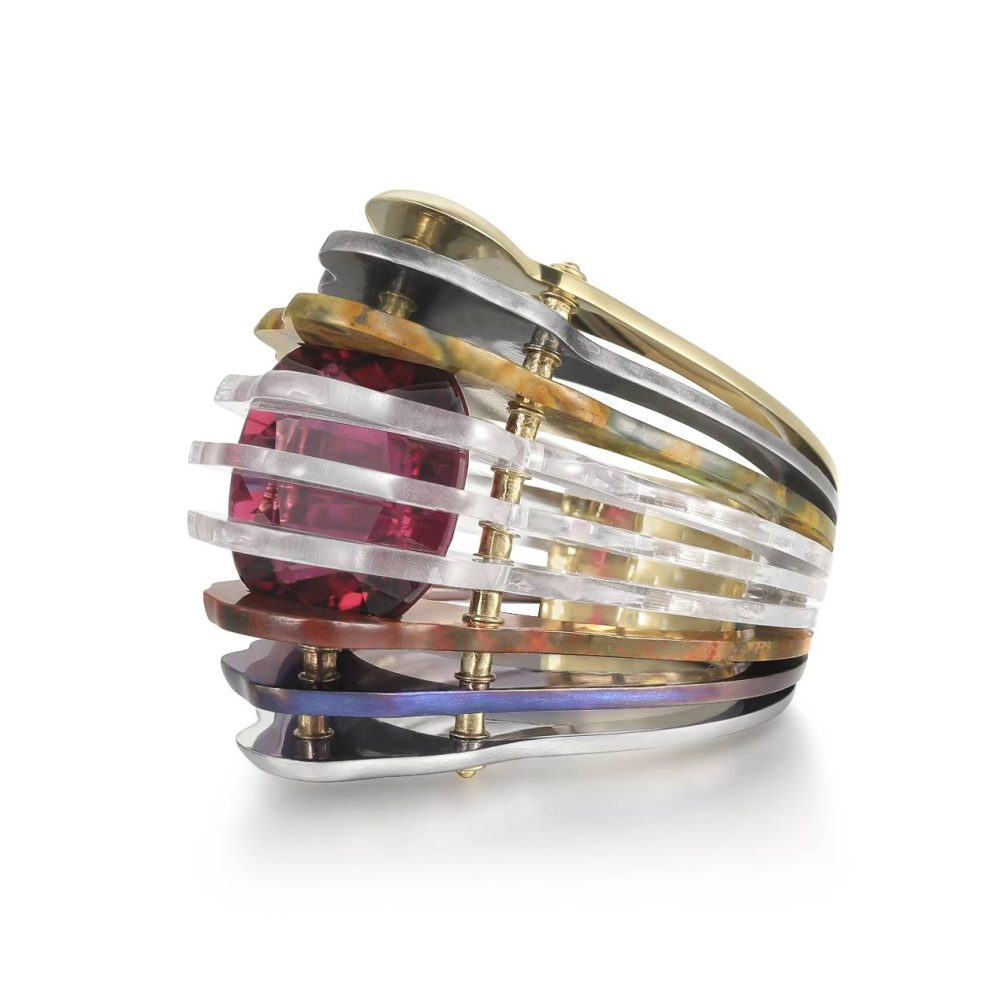
He uses a gold string, shaped like a cloud, to symbolise the thread connecting these eras. Embedded in the design are materials such as copper, silver, gold, titanium, and manmade sapphires—each marking a chapter in the timeline. At the centre is a ruby, held aloft by these materials, representing wisdom—the most precious treasure of all.
What’s next for Richard Wu Jewellery?
I have so many ideas lined up, just waiting to take shape. By the end of the year, we’re likely to unveil a collection that’s completely different from anything seen in jewellery so far. Right now, we’re still experimenting with the technique—and we’re almost there.

But when does this shift truly happen? I see it as the moment an insect metamorphoses—delicate, fleeting, yet profound. I captured that essence in an earring that doesn’t require a piercing. I called it Nirvana—a symbol of transformation, of endings and beginnings. A reminder that everything is in flux, and the power to shape the future lies in the now,” says Richard.

